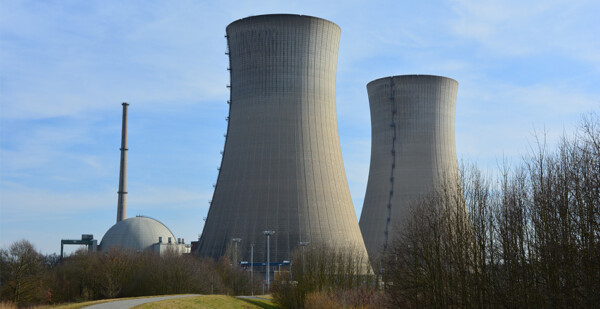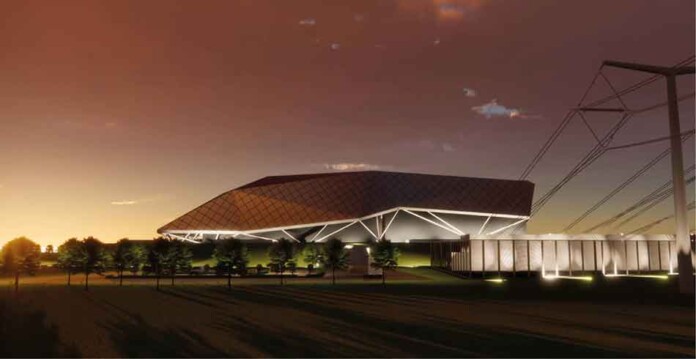By Ian Lowe, Emeritus Professor, School of Environment and Science, Griffith University, and Kylie Walker, Visiting Fellow, Australian National University
Australia’s clean energy transition is already underway, driven by solar, wind, batteries and new transmission lines.
But what about nuclear? Opposition leader Peter Dutton last month committed to building nuclear reactors on the site of retired coal plants—triggering intense debate over whether this older low-carbon power source is viable in Australia due to cost and long timeframes. Dutton proposed building a mix of traditional large nuclear plants alongside small modular reactors (SMRs).
Over the last decade, there’s been growing interest in SMRs. These reactor designs are meant to tackle known problems with traditional large reactor designs, namely cost, perceived safety and lengthy build times.
Are SMRs ready? Experts from the the Australian Academy of Technological Sciences and Engineering have done a deep dive on the state of the technology and market considerations in a new report, summing up the state of the technology.
What’s the answer? SMRs are not ready for deployment yet. The earliest they could be built in Australia would be in the 2040s. That’s too late to help with the push to net zero by 2050.
As our report notes, the “least risky option” would be to buy them after the technology has been commercialised and successfully operated overseas. But once the technology is proven, they could be used for specific circumstances, such as powering energy-intensive manufacturing and refining.
Related article: Examining the significant issues with LNP’s nuclear plan
What is a small modular reactor?
Small modular reactors are a range of new nuclear reactors currently being designed.
SMRs involve standardised components produced in factories and assembled onsite. As the name suggests, they are smaller than traditional large nuclear reactors, which have to be custom built. They are also, in theory, cheaper and safer.
Traditional nuclear reactors often generate 1GW of power. By contrast, each SMR would generate 50-300MW.
Between three to 20 SMRs would be needed to provide the amount of power produced by a traditional nuclear power station. Many designs incorporate in-built passive cooling in case of power failure to avoid the risk of meltdown. They could be daisy-chained—or connected up—with multiple reactors cores inside a single power plant.
They are currently at the design stage in the United States, the United Kingdom, Canada and South Korea, with no models yet operating in OECD countries. Publicly available information about SMRs being developed elsewhere is limited.
What’s behind this interest? Key factors include:
- very low carbon emissions
- ability to support intermittent power sources such as renewables
- potential for easier and faster construction than conventional nuclear
- ability to provide heat as a key input to industrial processes.
At present, we know of 14 different designs at a comparatively advanced stage of development globally. That means the designs are undergoing detailed simulations, evaluation of components and creation of small-scale replicas for testing and evaluation. None have yet been licensed for construction in any OECD countries.

How would SMRs stack up against other power sources?
Given the fact SMRs are still a while away from prime time, we estimate the earliest Australia could have one built would be during the 2040s.
At this time, Australia’s grid is projected to have 6GW of renewables added every year, along with a large amount of dispatchable energy in the form of battery storage, and a small amount of new gas generation.
Given renewables and battery technologies get cheaper every year, expensive new sources of power may well struggle to break in.
Because SMRs are still at the design stage, we have no operating data to assess the cost of their electricity.
Even so, CSIRO’s latest GenCost study illustrates the scale of the challenge. In 2030, the agency forecasts the cost of power from solar and wind, firmed by storage to firm capacity, to be A$89-125/MWh. By contrast, GenCost estimates large-scale nuclear would cost $141-233/MWh—and $230-382 for SMRs.
SMRs could conceivably contribute to the energy grid in the future, providing some steady power to energy-intensive industries. As the technology matures and proves itself in testing, these reactors may represent a lower-cost, shorter build-time,
smaller terrestrial footprint alternative to traditional, large-scale nuclear power plants.
But they won’t replace our need for a major expansion of renewable energy, and not in the next 20 years.
A market for SMRs?
This new report on SMRs in Australia makes clear that a mature SMR market will not emerge in time for Australia to meet its international commitment of reaching net zero emissions by 2050.
The barriers to adoption in Australia are substantial. Significantly, there are bans on nuclear power federally and in many states. These would need to be overturned before any work could commence.
A regulator would need to be created to oversee all aspects of the delivery, safety, workforce needs and environmental impact of any SMR installation. We’d need to train an appropriately skilled workforce.
Most importantly, nuclear energy (large or small) is a divisive issue. Australia would need to secure the social licence to operate nuclear.
It would also be financially and technically risky for Australia to pursue SMRs before a mature global market for the technology emerges.
Proponents expect SMRs will gradually drop in price as the technology matures, expertise develops and economies of scale take root.
Related article: Solar set to leave nuclear and everything else in the shade
This will take time—there’s no shortcut.
First, developers would have to progress designs and acquire licenses, funding and sites for construction. In Australia, this would require building a nuclear energy regulator and selecting locations with community support.
Second, developers would build a full-scale working prototype. SMR developers worldwide have indicated this is around ten years away.
Third, developers would have to convert the knowledge gained from full-scale prototypes into an accepted commercial package. This could take three to five years after prototyping.
Finally, developers would become vendors and compete for contracts to build SMRs, creating a global market. We expect the first commercial releases of SMRs between the late 2030s and mid 2040s.
There are many questions still to be answered for SMRs to be seriously considered as part of the power mix of the future: cost, construction time, waste disposal, water use, integration with the grid, First Nations sovereignty, skills and workforce and more. But companies around the world are making progress.
The next 10 years will bring a much stronger evidence base on whether SMRs could be useful in powering Australia in the future.![]()
Disclosure statement: Ian Lowe received funding from the National Energy Research, Development and Demonstration Council in 1983 for a project on Australia’s energy needs to 2030. He was president of the Australian Conservation Foundation from 2004 to 2014.
As CEO of the Australian Academy of Technological Sciences and Engineering, Kylie Walker receives funding from the federal Department of Industry, Science and Resources, and the Department of Education.
This article is republished from The Conversation under a Creative Commons license. Read the original article.







